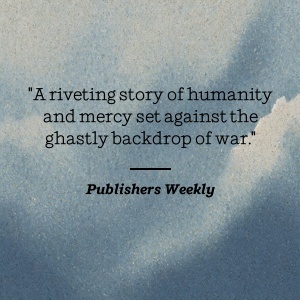

Full description not available



J**N
Best book since Hillenbrand's Unbroken! Must-Read!!!
Every now and then I cross paths with a book that strikes a chord somewhere deep within me, a book that shares my waking hours and my sleep. This is one of those books, as was Laura Hillenbrand's Unbroken. Coincidentally, both tell a true story from World War II ... Unbroken tells of Louis Zamperini who survived to tell about his adventures as a US pilot in the Pacific, subsequent capture and imprisonment by the Japanese." A Higher Call: An Incredible True Story of Combat and Chivalry in the War-Torn Skies of World War II" tells of two pilots, one German and one American who meet high in the skies over Germany on December 20th, 1943. Both of these books will stay with me, I am sure, for a lifetime. A Higher Call grabbed me and simply won't let go.December 20, 1943, in the skies over Bremen, Germany. Charlie Brown is the pilot of a B17 bomber, just finishing a raid on an aircraft production facility. His plane has been hit multiple times by German flak. It was missing a rudder and had sustained serious damage to its hydraulic and electrical systems, not to mention that only one engine out of four was functioning at peak, one crew member was dead and several others seriously injured, and now Charlie faces flying through enemy flak to get north of Germany over the North Sea and back to Great Britain, a feat beyond all imaginings. Suddenly from behind he spots a German fighter plane and Charlie knows he and his crew have no chance to survive if the fighter shoots so much as a rock launched from a slingshot at their plane. This edge-of-the-seat action enhances, but does not dominate the story. The pilot in the German Bf109 is Franz Stigler, a man who joined the German Air Force (Luftwaffe) to avenge his brother's death. One look at the B17 and Stigler knew it didn't stand a chance. He remembered the words of his former leader and mentor, Gustav Roedel, who had once told Franz, "you score victories, not kills ... you shoot at a machine not a man", and decided in less time than it took the thought to form that he not only couldn't shoot down that crippled bomber but that he would do everything he could to save the men inside. There were two dangers to this, but Stigler barely registered them. The first, of course, was that the bomber would fire on him first and knock him out of the sky (he didn't know that the bomber's guns were frozen, all but the turret gun whose range was so limited that he was never really in any danger from that). But the other, perhaps greater danger was that if the German command ever found out that he had the chance to dispatch this bomber and didn't, he could be court-martialed and sentenced to death. On Stigler's mind at that moment in time, however, was how he could keep the crew on this bomber from either being sent to a fiery death by German flak or an icy death in the North Sea. Ultimately, he led them through the German flak and left them over the North Sea with a salute and a prayer that they could stay safe. And it is in this one episode that Franz Stigler became a hero in my book. He would go on to fight some 487 missions in the war and is now in history books as a German flying ace, but for me it was that one act of human kindness, of human compassion, that made him a hero.Though the book centers around the heroic acts of Charlie Brown and Franz Stigler in the air over Germany that day, the event itself actually occupies less than 4% (15 pages out of 368) of the book. Had I realized this in the beginning, I might never have bought the book and that would have been my loss. The bulk of the book follows Stigler's career and rise as a flying ace throughout the war and it is from this that I, who have nursed a hatred of all things pertaining to the German military almost since my birth, came to realize that not every soldier in Germany was a Nazi and not every soldier in Germany lacked a heart. The Luftwaffe, or German Air Force, in this book is shown to be no less human than any man in the USAF or any other branch of the Allied military. Overwhelmingly, the Luftwaffe were NOT members of the Nazi Party and did NOT support Hitler and his programs. They were simply there to do their jobs and defend their nation and its people. In fact, most were not aware of Hitler's "Final Solution" (the extermination of Jews) and the death camps until near the end of the war. For the most part Germans, including the Luftwaffe, were as afraid of the SS (Gestapo) as were we.Many years after the end of the war, both Brown and Stigler wondered what had become of one another. Neither knew the other's name, yet neither had forgotten that strange encounter in the skies over Germany. Eventually they would have their reunion and become brothers not of shared blood, but of shared life. Notably, though fifty years had passed since the end of WWII, once this story became public, Franz Stigler began receiving hate mail, presumably from Germans who felt that he should have blown Charlie and his crew out of the sky. I guess hatred is in no danger of becoming extinct any time soon.This is Adam Makos' first published book, though he has been editor of the military magazine Valor, for some fifteen years, and frankly I was intrigued when I read a synopsis of the storyline, but was not expecting great writing from this first-time author. I was wrong. The writing is as seamless and spell-binding as almost any I have read. This is a heart-warming, yet edge-of-the-seat true story that reads like a novel and leaves the reader wanting much more. Sadly, both Charlie Brown and Franz Stigler died in 2008. However there are photos and video clips of their reunion some 50 years later on the author's website: [...]. If you read no other non-fiction book this year, do yourself a favor and read this one. It will stay in your mind and in your heart for a good long time, maybe forever.
H**.
Incredible Story
This is an incredible story which is difficult to put down. It gives you an insight into the brotherhood of WWII pilots and the immense level of respect they had for each other, even for those they were fighting against. A truly captivating book that’s masterfully written.
R**O
My God, what a book!
My God, what a book! Adam Makos with Larry Alexander bring us this harrowing and chivalrous story of two World War II Air Forces. This is not just a story about an incident involving a German Messerschmitt BF 109, and a U.S. B17 Flying Fortress. No, it's also about both sides fighting with courage and perseverance, while maintaining a healthy respect for each other. The German Air Force fighter pilots were not Nazi Party members, in fact their attitude was a thorn in the hat of the German Reichsmarshall Hermann Goering ( German spelling ). They fought because they had no choice, fly or die. On page 288, the pilots attitude is confirmed when Major Hohagen of the German Air Force tells a joke to one of the book's protagonist, Ace Franz Stigler: " Hitler, Goering, Himmler, and all of their friends are out on a boat at sea, there's a big storm and their boat sinks! Who's saved?" Franz knew the joke. "Germany." If a political officer overheard this joke, by law they both would have been executed. Herr Goering would occasionally slip a political officer into the ranks of the Air Force to get the flavor of the pilots. I extol the effort the authors made to bring the readers this compelling non-fiction Pulitzer Prize worthy story. I know that says a lot, but you haven't read this book.The book opens with the story of Franz Stigler, a German Messerschmitt BF109 fighter pilot, who completed 487 missions by the war's end. It focuses on his time served in North Africa, and his service defending Italy and Germany from U.S. and British bombing raids. The reader meets many aces; such as, Hans-Joachim Marseille, the Star of Africa, and General Adolf Galland, leader of all fighter pilots. Most of the fighters we meet are holders of the Knights Cross ( 30 or more victories ). Bear in mind that you are going to feel empathy for these men, even though they are the enemy. They fought bravely for their country, not for the Nazi Party. They fought with honor and with a knights chivalry throughout the war. They had a code of ethics similar to the American fighters and bombers: they didn't shoot a parachuting enemy pilot, nor mistreat them as a POW. Unfortunately, that can't be said if the SS did the capturing. It's sad that the typical German citizen hated the German fighter pilot at the end of the war because: "You didn't keep the bombs from falling." That's a pretty sad statement since no one could stop thousands of B17's dropping bombs everyday. The Germans called our monstrous B17 flying fortress, "the four motors." Each plane rained down twelve 500 pound bombs each trip.The second part of the book tells the story of a twenty year old American pilot, 2nd Lt. Charlie Brown ( Not of Snoopy's Red Baron squad ). He is a member of the 379th bomber group stationed in England. You are going to like his crew; Al `Doc' Sadok, Robert `Andy' Andrews, and Spencer `Pinky' Luke, to name a few. They get into a now famous incident with Franz Stigler on Charlie's first bombing raid as a Captain that winds up becoming the title of this book. My definition of `A higher call' is " vacating a duty for a better one, or " It's God's wish ". I don't know if the author had my definitions in mind, or not. You might ask, What is the incident? Well, I can't tell you! I guess you will have to read this wonderful story yourself. By the way, this book doesn't read like the history that it is, instead it reads like a novel, such as Erik Larson's In the 'Garden of Beasts'.The third part of the book deals with Goering's dissatisfaction with Germany's famous fighter pilots led by General Galland. He would like them executed for treasonous statements, and he accuses them of being cowards, but they are too popular, so he makes them form the JV-44's unit ( the squadron of experts ). They are responsible for defending Germany against the massive U.S. bombing raids in the last months of the war. Goering figures that they will die quickly against overwhelming odds. He forgets that these men are legends in their own time: Franz Stigler, Major Gerhard Barkhorn ( 301 victories! ), Col. Luetzow, Oberst Steinhoff, Oberst Roedel, Major Hohagen, Oberst Trautloft, and Hauptmann ` the count' Krupinski are the main flyers. This part of the book was very exciting and sometimes very sad. The rest of the book deals with: What happened to these men ( German and American ) after the war was over, and the ensuing years? Well, like Arte Johnson on the 'Laugh-In' show used to say: "It's very interesting". So is this gripping book!
Trustpilot
1 month ago
3 days ago
3 weeks ago
1 month ago